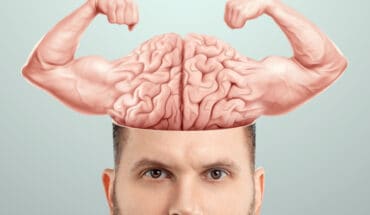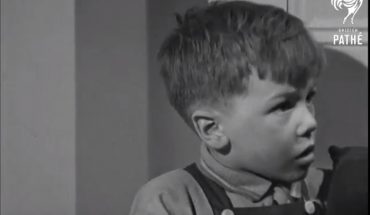Pharmacists can also refer directly to your GP if they feel your symptoms require further investigation.
Here are the 7 conditions that you can now receive treatment for by pharmacists.
Sore throat
Sore throats are extremely common illnesses and can become so painful that you may need medication. Your pharmacist can assess your sore throat and advise if any medication is needed and let you know key symptoms to look out for that could indicate a serious infection. If prescribed medication is indicated, they can give you this.
However, there are also some extremely effective home remedies that are likely to ease the pain.
- Gargle with warm, salty water (or with aspirin providing there is no contra-indication for this, you are not on anti-coagulant medication or allergic to aspirin.
- Drink lots of water.
- Eat cool or soft foods.
- Suck ice cubes or ice lollies.
- Warm drinks made with honey and lemon can be extremely soothing
Earache
Earache is another common problem, especially for children. While it doesn’t usually cause long term problems; they can be very uncomfortable and unpleasant.
The most common form of ear pain is due to an inner or middle ear infection. Ear infections often clear up on their own, usually within 3 days, however you may need to be prescribed antibiotics if they don’t clear up or if fluid is being discharged from the ear.
The pharmacist will be able to examine your ear and take medical details to diagnose the best treatment.
Your doctor or pharmacist may prescribe:
- Antibiotic eardrops for a bacterial infection
- Steroid ear drops to reduce swelling
- Antifungal ear drops if there is a fungal infection
- Antibiotic tablets if the infection is severe
To read more on common causes of ear pain, read https://firstaidforlife.org.uk/ear-problems-in-children/
Sinusitis
Sinusitis is the swelling of the sinuses; the passageways around your nose. This can cause acute and sometimes throbbing pain across the area between your cheeks, nose, and eyes, down through your teeth and sometimes right round your head. It often occurs following a cold when the passageways have become congested and will not clear. Like ear pain, it usually clears up on its own within 2 or 3 weeks. However often you will need treatment to clear it.
Symptoms of sinusitis include:
- Pain, swelling, and tenderness around the cheeks, eyes or forehead
- A blocked nose
- Reduced sense of smell
- Green or yellow mucus from the nose
- A sinus headache
- Toothache
- A high temperature
- Bad breath
To ease your pain at home, you should get lots of rest and drink lots of fluid. Painkillers like paracetamol and ibuprofen can help, but if the pain is getting worse then a pharmacist or doctor can prescribe helpful medication. Also, massaging your sinuses with a warm flannel can help, as can steam inhalation.
Your Pharmacist may give you a steroid nasal spray or drops to reduce the swelling, or antihistamines if they believe the inflammation is due to an allergic response. They may prescribe you antibiotics if there is an indication that the infection is persistent and due to an antibacterial infection, rather than a virus.
Impetigo
Impetigo is a skin infection, which similarly usually clears up on its own, after about 7 to 10 days. It is very contagious, particularly in young children.
Symptoms of impetigo include:
- Redness sores or blisters. These may burst and leave crusty, golden-brown patches
- These patches may look a bit like cornflakes
- Impetigo can easily spread to other parts of the body and be itchy
It’s really important to look out for these signs as impetigo is very contagious and if you or your child has it, it could easily spread to the rest of the family. Furthermore, hand hygiene is critical and it is really important to keep towels and flannels separate and not to share anything that has been close to the contaminated area.
Prescribed treatments for impetigo might include:
- A hydrogen peroxide cream
- Antibiotic cream or tablets
Shingles
Shingles is an infection that is caused by the same virus as chickenpox. If you’ve had chickenpox when you were little, it can reactivate in your body as shingles. It often occurs when someone is rundown or has been suffering from increase stress.
Though shingles isn’t life-threatening, it is very painful. Vaccines are helpful in lowering the risk of shingles.
Symptoms:
- Pain, burning or tingling
- Sensitivity to touch
- A red rash that begins a few days after the pain
- Blisters that may burst and form a crust
- Itchiness
You may also get a headache or feel generally unwell. The rashes can appear anywhere on the body. Wet compresses, calamine lotion, and warm oatmeal baths may help relieve itching. If you fill a sock with porridge oats and run your bathwater through the sock, this can add the oatmeal to your bathwater without the bits! Oatmeal is extremely soothing for itchy rashes.
Your pharmacist will be able to diagnose shingles and offer you early treatment with prescription antiviral drugs. This may speed healing and lower your risk of complications. These drugs include Acyclovir (Zovirax)
Infected insect bites
Insect bites commonly become infected. It is really important to try not to scratch itchy insect bites as this can quickly lead them to become infected.
Symptoms of an infected bite include:
- Pus around the bite
- The bite is hot, red, sore and swollen – or even more itchy
- Your glands become swollen
Initial treatment at home can include antihistamine creams. Applying a warm compress to the bite.
Your pharmacist should be able to help you if you think your bite has become infected.
To read more on what to do to prevent your bite becoming infected, read here: https://firstaidforlife.org.uk/what-bit-me-ultimate-guide-common-bites-and-stings/
Uncomplicated UTIs in women
Anyone can get a UTI, but they are particularly common in women. In some cases, women get them repeatedly – this is known as a recurrent UTI.
UTIs are painful, but usually resolve themselves within a few days. They are most commonly treated with antibiotics.
There are lower UTIs and upper UTIs. Lower UTIs are uncomplicated, common, and not usually a cause for major concern. However, higher UTIs can be dangerous if left untreated since they can damage the kidneys and spread to the bloodstream.
Symptoms of a lower UTI include:
- Needing to wee more than usual
- Pain when weeing
- Feeling as though you’re unable to empty your bladder
- Pain in the lower tummy
- Urine that’s cloudy, smells bad or contains blood
- Feeling usually tired, achy, and unwell
- For some older and more vulnerable people a UTI can cause extreme confusion and make them seriously unwell.
Urinary tract infections can often be treated at home by drinking more fluids and cranberry juice can be particularly helpful at reducing the acidity of the urine and making peeing more comfortable.
If you have a lower UTI, your pharmacist can prescribe antibiotics for you.
- Gut microbiome could delay onset of type 1 diabetes - 3rd April 2025
- The da Vinci 5 Robot Is Set To Transform Bariatric Care: - 31st March 2025
- Beyond money: the hidden drivers fuelling child food insecurity - 31st March 2025






